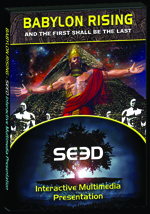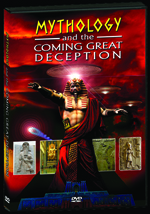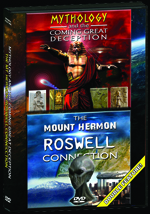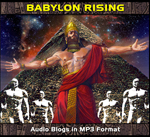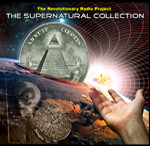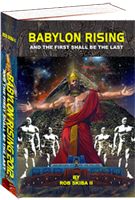
The following information is part of a brand new blog series called:
The Great Pyramid, Babylon and the Commandments of Eden
written by Rob Skiba II
© 2014
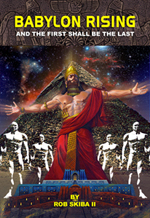 |
The Great Pyramid PART 2: The Gospel |
COMING SOON! |
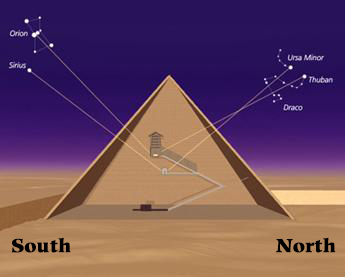
There is no question, the Great Pyramid has a connection to the stars. But why? What is the meaning behind the alignments? We will explore this further in this blog...
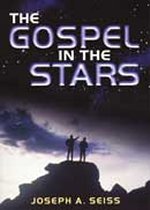 There are two books that I highly recommend concerning the Biblical meanings of the stars and constellations: The Witness of the Stars
There are two books that I highly recommend concerning the Biblical meanings of the stars and constellations: The Witness of the Stars
by E.W. Bullinger and The Gospel in the Stars
by Joseph A. Seiss. The latter wrote in the Supplement of his book:
There is nothing, then, improbable in the report of Josephus when he says that the descendants of Seth were skillful astronomers, and seems to ascribe to them the invention of the cycle of which Cassini has developed the excellence. The Jews, Assyrians, and Arabians have abundance of traditions concerning the antediluvian astronomical knowledge, especially of Adam, Seth, Enoch and Ham. It is asserted in the book of Enoch, as Origen tells us, that the constellations in the time of that patriarch were already named and divided. The Arabians say that they have named Enoch Edris, on account of his learning.
That the invention of the Zodiac ought to be attributed to the antediluvians may appear to some rash and idle conjecture; but I shall not renounce this conjecture merely because it may startle those who never thought of it before. Tradition has told several of the Oriental nations that the antediluvians were eminently skilled in astronomy; and tradition has generally some foundation in truth.
* * *
Goodsir, in his Homilies on Ethnic Inspiration, takes the ground that, as it is unnatural and rash to suppose that God never taught any of the human race, nor led any of them to see, during those early generations, the scientific truth respecting these wondrous creations of His own that shine in the heavens, so there is solid reason to believe that some were so led, and were taught supra-scientifically those things, and that there was proof of it now which all who are willing to investigate will find as clear as the noonday sun.
One part of this proof he finds in the Great Pyramid of Egypt, the first, greatest and most perfect, and most scientific building now upon the face of the earth, and constructed certainly more than four thousand years ago. By the scientific labors of many within the last twenty years it has been ascertained and clearly demonstrated that there is the measures, pointings, form and features of that great primeval monument, whosoever built it and for whatever purpose, a massive and indestructible stone memorial of a complete and faultless knowledge of the structure of the universe, of the exact and physical sciences both terrestrial and cosmical, and determination of a perfect system of weights and measures scientifically conformed to what the Opifex Mundi [Creator of the World] fixed in things when he fetched a compass round the worlds and weighed the hills in balances. Scientific investigation on the part of different men competent to the task have made it clear that there is built into that edifice a record of the condition of the starry heavens at the time of its erection which gives its age by astronomy in full record with all external indications and evidences; also a record of the size, form and weight of the earth, and its relative to and distance from the sun, the true length of the solar year, the number of years in the precessional cycle, the average temperature of the habitable world, together with multitudinous cosmical facts and mathematical formulas and proportions no better told by any science now existing among men. Nay, more, says this author: "The unquestionable and remarkable coincidences between the structure of the Great Pyramid and astronomical facts find an exact place amongst, and give consistency and form to, what may be called a collection of astronomical and physical traditions, the whole of which, in the result, corroborates the standard chronology and history of the race." (see my book, A Miracle in Stone.)
- Joseph A. Seis, The Gospel in the Stars
, pages 175, 176
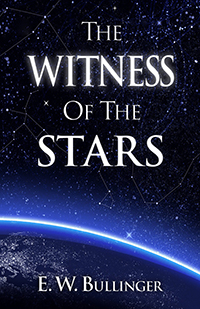 Likewise, in the Introduction to his book, The Witness of the Stars
Likewise, in the Introduction to his book, The Witness of the Stars, Bullinger writes a lot of things that I think are worthy of note for this discussion, so I'm going to just include most of it here for your consideration (wherever you see "* * *" it indicates a break in continuity, skipping down to a later portion of the text) :
If we turn to history and tradition, we are at once met with the fact that the Twelve Signs are the same, both as to the meaning of their names and as to their order in all the ancient nations of the world. The Chinese, Chaldean, and Egyptian records go back to more than 2,000 years BC. Indeed, the Zodiacs in the Temples of Denderah and Esneh, in Egypt, are doubtless copies of Zodiacs still more ancient, which, from internal evidence, must be placed nearly 4,000 BC, when the summer solstice was in Leo.
Josephus hands down to us what he gives as the traditions of his own nation, corroborated by his reference to eight ancient Gentile authorities, whose works are lost. He says that they all assert that "God gave the antediluvians such long life that they might perfect those things which they had invented in astronomy." Cassini commences his History of Astronomy by saying "It is impossible to doubt that astronomy was invented from the beginning of the world; history, profane as well as sacred, testifies to this truth." Nouet, a French astronomer, infers that the Egyptian Astronomy must have arisen 5,400 BC!
Ancient Persian and Arabian traditions ascribe its invention to Adam, Seth, and Enoch. Josephus asserts that it originated in the family of Seth; and he says that the children of Seth, and especially Adam, Seth, and Enoch, that their revelation might not be lost as to the two coming judgments of Water and Fire, made two pillars (one of brick, the other of stone), describing the whole of the predictions of the stars upon them, and in case the brick pillar should be destroyed by the flood, the stone would preserve the revelation (Book 1, chapters 1-3).
This is what is doubtless meant by Genesis 11:4, "And they said, Go to, let us build us a city and a tower whose top may reach unto heaven." The words "may reach" are in italics. There is nothing in the verse which relates to the height of this tower. It merely says, and his top with the heavens, i.e. with the pictures and the stars, just as we find them in the ancient temples of Denderah and Esneh in Egypt. This tower, with its planisphere and pictures of the signs and constellations, was to be erected like those temples were afterwards, in order to preserve the revelation, "lest we be scattered abroad upon the face of the whole earth."
This is corroborated by Lieut.-Gen. Chesney, well known for his learned researches and excavations among the ruins of Babylon, who, after describing his various discoveries, says, "About five miles S.W. of Hillah, the most remarkable of all the ruins, the Birs Nimroud of the Arabs, rises to a height of 153 feet above the plain from a base covering a square of 400 feet, or almost four acres. It was constructed of kiln-dried bricks in seven stages to correspond with the planets to which they were dedicated: the lowermost black, the colour of Saturn; the next orange, for Jupiter; the third red, for Mars; and so on. * These stages were surmounted by a lofty tower, on the summit of which, we are told, were the signs of the Zodiac and other astronomical figures; thus having (as it should have been translated) a representation of the heavens, instead of 'a top which reached unto heaven.'"
* Fragments of these coloured glazed bricks are to be seen in the British Museum.
This Biblical evidence carries us at once right back to the Flood, or about 2,500 years BC.
This tower or temple, or both, was also called "The Seven Spheres," according to some; and "The Seven Lights," according to others. It is thus clear that the popular idea of its height and purpose must be abandoned, and its astronomical reference to revelation must be admitted. The tower was an attempt to preserve and hand down the antediluvian traditions; their sin was in keeping together instead of scattering themselves over the earth.
Another important statement is made by Dr. Budge, of the British Museum (Babylonian Life and History, p. 36). He says, "It must never be forgotten that the Babylonians were a nation of stargazers, and that they kept a body of men to do nothing else but report eclipses, appearances of the moon, sunspots, etc., etc."
"Astronomy, mixed with astrology, occupied a large number of tablets in the Babylonian libraries, and Isaiah 47:13 refers to this when he says to Babylon, 'Thou art wearied in the multitude of thy counsels. Let now thy astrologers (marg. viewers of the heavens), the star-gazers, the monthly prognosticators stand up.' The largest astrological work of the Babylonians contained seventy tablets, and was compiled by the command of Sargon of Agade thirty-eight hundred years before Christ! It was called the 'Illumination of Bel.'"
Note: Sargon has also been connected to Nimrod by a number of scholars and researchers (he became known by many names - some due to the 70 languages and some due to titles that he earned for himself). If indeed this is Nimrod, as the founder of Babylon, then it makes perfect sense that he would use this knowledge for his own benefit. If Nimrod also assumed the name of Osiris to the Egyptians, likening himself - as the "mighty hunter" to his equivelent in the heavens (or Isis doing so for him after his death), then we can easily understand his connection to Orion.
"Their observations were made in towers called 'ziggurats'" (p. 106).
"They built observatories in all the great cities, and reports like the above [which Dr. Budge gives in full] were regularly sent to the King" (p. 110).
"They were able to calculate eclipses, and had long lists of them." "They found out that the sun was spotted, and they knew of comets." "They were the inventors of the Zodiac." (?) There are fragments of two (ancient Babylonian) planispheres in the British Museum with figures and calculations inscribed upon them. "The months were called after the signs of the Zodiac" (p. 109).
We may form some idea of what this "representation of the heavens" was from the fifth "Creation Tablet," now in the British Museum. It reads as follows:
"Anu [the Creator] made excellent the mansions [i.e. the celestial houses] of the great gods [twelve] in number [i.e. the twelve signs or mansions of the sun].
The stars he placed in them. The lumasi [i.e. groups of stars or figures] he fixed.
He arranged the year according to the bounds [i.e. the twelve signs] which he defined.
For each of the twelve months three rows of stars [i.e. constellations] he fixed.
From the day when the year issues forth unto the close, he marked the mansions [i.e. the Zodiacal Signs] of the wandering stars [i.e. planets] to know their courses that they might not err or deflect at all."
Coming down to less ancient records: Eudoxos, an astronomer of Cnidus (403 to 350 BC), wrote a work on Astronomy which he called Phainomena. Antigonus Gonatas, King of Macedonia (273-239 BC), requested the Poet Aratus to put the work of Eudoxus into the form of a poem, which he did about the year 270 BC. Aratus called his work Diosemeia (the Divine Signs).
* * *
Then Aratus proceeds to describe and explain all the Signs and Constellations as the Greeks in his day understood, or rather misunderstood, them, after their true meaning and testimony had been forgotten.
Moreover, Aratus describes them, not as they were seen in his day, but as they were seen some 4,000 years before. The stars were not seen from Tarsus as he describes them, and he must therefore have written from a then ancient Zodiac. For notwithstanding that we speak of "fixed stars," there is a constant, though slow, change taking place amongst them. There is also another change taking place owing to the slow recession of the pole of the heavens (about 50" in the year); so that while Alpha in the constellation of Draco was the Polar Star when the Zodiac was first formed, the Polar Star is now Alpha in what is called Ursa Minor. This change alone carries us back at least 5,000 years. The same movement which has changed the relative position of these two stars has also caused the constellation of the Southern Cross to become invisible in northern latitudes. When the constellations were formed the Southern Cross was visible in N. latitude 40o, and was included in their number. But, though known by tradition, it had not been seen in that latitude for some twenty centuries, until voyages to the Cape of Good Hope were made. Then was seen again The Southern Cross depicted by the Patriarchs. Here is another indisputable proof as to the antiquity of the formation of the Zodiac.
* * *
The word Zodiac itself is from the Greek zoidiakos, which is not from zoe, to live, but from a primitive root through the Hebrew Sodi, which in Sanscrit means a way. Its etymology has no connection with living creatures, but denotes a way, or step, and is used of the way or path in which the sun appears to move amongst the stars in the course of the year.
To an observer on the earth the whole firmament, together with the sun, appears to revolve in a circle once in twenty-four hours. But the time occupied by the stars in going round, differs from the time occupied by the sun. This difference amounts to about one-twelfth part of the whole circle in each month, so that when the circle of the heavens is divided up into twelve parts, the sun appears to move each month through one of them. This path which the sun thus makes amongst the stars is called the Ecliptic. *
* Besides this monthly difference, there is an annual difference; for at the end of twelve months the sun does not come back to exactly the same point in the sign which commenced the year, but is a little behind it. But this difference, though it occurs every year, is so small that it will take 25,579 years for the sun to complete this vast cycle, which is called The precession of the Equinoxes; i.e., about one degree in every 71 years. If the sun came back to the precise point at which it began the year, each sign would correspond, always and regularly, exactly with a particular month; but, owing to this constant regression, the sun (while it goes through the whole twelve signs every year) commences the year in one sign for only about 2,131 years. In point of fact, since the Creation the commencement of the year has changed to the extent of nearly three of the signs. When Virgil sings--
"The White Bull with golden horns opens the year,"
he does not record what took place in his own day. This is another proof of the antiquity of these signs.
The Ecliptic, or path of the sun, if it could be viewed from immediately beneath the Polar Star, would form a complete and perfect circle, would be concentric with the Equator, and all the stars and the sun would appear to move in this circle, never rising or setting. To a person north or south of the Equator the stars therefore rise and set obliquely; while to a person on the Equator they rise and set perpendicularly, each star being twelve hours above and twelve below the horizon.
The points where the two circles (the Ecliptic and the Equator) intersect each other are called the Equinoctial points. It is the movement of these points (which are now moving from Aries to Pisces) which gives rise to the term, "the precession of the Equinoxes."
Each of these twelve parts (consisting each of about 30 degrees) is distinguished, not by numbers or by letters, but by pictures and names, and this, as we have seen, from the very earliest times. They are preserved to the present day in our almanacs, and we are taught their order in the familiar rhymes:--
"The Ram, the Bull, the heavenly Twins,
And next the Crab, the Lion shines,
The Virgin and the Scales;
The Scorpion, Archer, and Sea-Goat,
The Man that carries the Water-pot,
And Fish with glittering scales."These signs have always and everywhere been preserved in this order, and have begun with Aries. They have been known amongst all nations, and in all ages, thus proving their common origin from one source.
The figures themselves are perfectly arbitrary. There is nothing in the groups of stars to even suggest the figures. This is the first thing which is noticed by every one who looks at the constellations. Take for example the sign of Virgo, and look at the stars. There is nothing whatever to suggest a human form; still less is there anything to show whether that form is a man or a woman. And so with all the others.
The picture, therefore, is the original, and must have been drawn around or connected with certain stars, simply in order that it might be identified and associated with them; and that it might thus be remembered and handed down to posterity.
There can be no doubt, as the learned Authoress of Mazzaroth conclusively proves, that these signs were afterwards identified with the twelve sons of Jacob. Joseph sees the sun and moon and eleven stars bowing down to him, he himself being the twelfth (Gen 37:9). The blessing of Jacob (Gen 49) and the blessing of Moses (Deut 33) both bear witness to the existence of these signs in their day. And it is more than probable that each of the Twelve Tribes bore one of them on its standard. We read in Numbers 2:2, "Every man of the children of Israel shall pitch by his own STANDARD, with the ENSIGN of their father's house" (RV "with the ensigns of their fathers' houses"). This "Standard" was the Degel on which the "Sign" (oth) was depicted. Hence it was called the "En-sign." Ancient Jewish authorities declare that each tribe had one of the signs as its own, and it is highly probable, even from Scripture, that four of the tribes carried its "Sign"; and that these four were placed at the four sides of the camp.
If the Lion were appropriated to Judah, then the other three would be thus fixed, and would be the same four that equally divide the Zodiac at its four cardinal points. According to Numbers 2 the camp was thus formed:--
| North | ||
| Dan-The Scorpion (Scorpio) | ||
| Asher (Sagittarius) | ||
| Naphtali (Capricorn) | ||
| West | East | |
| Ephraim-The Bull (Taurus) | Levi (Libra) | Judah-The Lion (Leo) |
| Manasseh-The Bull (Taurus) | The Scales | Issachar (Cancer) |
| Benjamin (Gemini) | Zebulun (Virgo) | |
| South | ||
| Reuben-The Man (Aquarius) | ||
| Simeon (Pisces) | ||
| Gad (Aries) |
If the reader compares the above with the blessings of Israel and Moses, and compares the meanings and descriptions given below with those blessings, the connection will be clearly seen. Levi, for example, had no standard, and he needed none, for he kept "the balance of the Sanctuary," and had the charge of that brazen altar on which the atoning blood outweighed the nation's sins.
The four great signs which thus marked the four sides of the camp, and the four quarters of the Zodiac, are the same four which form the Cherubim (the Eagle, the Scorpion's enemy, being substituted for the Scorpion). The Cherubim thus form a compendious expression of the hope of Creation, which, from the very first, has been bound up with the Coming One, who alone should cause its groanings to cease.
But this brings us to the Signs themselves and their interpretation.
These pictures were designed to preserve, expound, and perpetuate the one first great promise and prophecy of Genesis 3:15, that all hope for Man, all hope for Creation, was bound up in a coming Redeemer; One who should be born of a woman; who should first suffer, and afterwards gloriously triumph; One who should first be wounded by that great enemy who was the cause of all sin and sorrow and death, but who should finally crush the head of "that Old Serpent the Devil."
These ancient star-pictures reveal this Coming One. They set forth "the sufferings of Christ and the glory that should follow." Altogether there are forty-eight of them, made up of twelve SIGNS, each sign containing three CONSTELLATIONS.
These may be divided into three great books, each book containing four chapters (or Signs); and each chapter containing three sections (or Constellations).
Each book (like the four Gospels) sets forth its peculiar aspect of the Coming One; beginning with the promise of His coming, and ending with the destruction of the enemy.
But where are we to begin to read this wondrous Heavenly Scroll? A circle has proverbially neither beginning nor end. In what order then are we to consider these signs? In the heavens they form a never-ending circle. Where is the beginning and where is the end of this circle through which the sun is constantly moving? Where are we to break into this circle? and say, This is the commencement. It is clear that unless we can determine this original starting point we can never read this wondrous book aright.
As I have said, the popular beginning today is with Aries, the Ram. But comparing this Revelation with that which was afterwards written "in the Volume of the Book," Virgo is the only point where we can intelligently begin, and Leo is the only point where we can logically conclude. Is not this what is spoken of as the unknown and insoluble mystery--"The riddle of the Sphinx"? The word "Sphinx" is from to bind closely together. It was therefore designed to show where the two ends of the Zodiac were to be joined together, and where the great circle of the heavens begins and ends.
The Sphinx is a figure with the head of a woman and the body of a lion! What is this but a never-ceasing monitor, telling us to begin with Virgo and to end with Leo! In the Zodiac in the Temple of Esneh, in Egypt, a Sphinx is actually placed between the Signs of Virgo and Leo...
Beginning, then, with Virgo, let us now spread out the contents of this Heavenly Volume, so that the eye can take them in at a glance. Of course we are greatly hindered in this, in having to use the modern Latin names which the Constellations bear today. * Some of these names are mistakes, others are gross perversions of the truth, as proved by the pictures themselves, which are far more ancient, and have come down to us from primitive times.
* It is exactly the same with the books of the Bible. Their order and their names, as we have them in the English Bible, are those which man has given them, copied from the Septuagint and Vulgate, and in many cases are not the Divine names according to the Hebrew Canon. See The Names and Order of the Books of the Old Testament, by the same author.
After the Revelation came to be written down in the Scriptures, there was not the same need for the preservation of the Heavenly Volume. And after the nations had lost the original meaning of the pictures, they invented a meaning out of the vain imagination of the thoughts of their hearts. The Greek Mythology is an interpretation of (only some of) the signs and constellations after their true meaning had been forgotten. It is popularly believed that Bible truth is an evolution from, or development of, the ancient religions of the world. But the fact is that they themselves are acorruption and perversion of primitive truth!
- E. W. Bullinger, The Witness of the Stars
, excerpts from the Introduction [emphasis mine]
As stated above Bullinger brilliantly weaves the "witness of the stars" together into "three great books, each book containing four chapters (or Signs); and each chapter containing three sections (or Constellations)." Each book (like the four Gospels) sets forth its peculiar aspect of the Coming One; beginning with the promise of His coming, and ending with the destruction of the enemy. He arranged the story as follows:
The First Book
The Redeemer
(His First Coming)
"The sufferings of Christ"
Chapter I
The Prophecy of the Promised Seed of the Woman
VIRGO (The Virgin. A woman bearing a branch in her right hand and an ear of corn in her left). The Promised Seed of the woman.
1. COMA (The Desired. The woman and child). The Desired of all nations.
2. CENTAURUS (The Centaur with two natures, holding a spear piercing a victim). The despised sin offering.
3. BOOTES (a man walking bearing a branch called ARCTURUS, meaning the same). He cometh.
Chapter II
The Redeemer's Atoning Work
LIBRA (The Scales). The price deficient balanced by the price which covers.
1. CRUX, The Cross endured.
2. LUPUS, or VICTIMA, The Victim slain.
3. CORONA, The Crown bestowed.
Chapter III
The Redeemer's Conflict
SCORPIO (The Scorpion) seeking to wound, but itself trodden under foot.
1. SERPENS (The Serpent struggling with the man).
2. O-PHI-U-CHUS (The man grasping the serpent). The struggle with the enemy.
3. HERCULES (The mighty man. A man kneeling on one knee, humbled in the conflict, but holding aloft the tokens of victory, with his foot on the head of the Dragon). The mighty Vanquisher seeming to sink in the conflict.
Chapter IV
The Redeemer's Triumph
SAGITTARIUS (The Archer). The two-natured Conqueror going forth "Conquering and to conquer."
1. LYRA (The Harp). Praise prepared for the Conqueror.
2. ARA (The Altar). Consuming fire prepared for His enemies.
3. DRACO (The Dragon). The Old Serpent— Devil, cast down from heaven.
The Second Book
The Redeemed
"The result of the Redeemer's sufferings"
Chapter I
Their Blessings Procured
CAPRICORNUS (The fish-goat). The goat of Atonement slain for the Redeemed.
1. SAGITTA (The Arrow). The arrow of God sent forth.
2. AQUILA (The Eagle). The smitten One falling.
3. DELPHINUS (The Dolphin). The dead One rising again.
Chapter II
Their Blessings Ensured
AQUARIUS (The Water-Bearer). The living waters of blessing poured forth for the Redeemed.
1. PISCIS AUSTRALIS (The Southern Fish). The blessings bestowed.
2. PEGASUS (The Winged Horse). The blessings quickly coming.
3. CYGNUS (The Swan). The Blesser surely returning.
Chapter III
Their Blessings in Abeyance
PISCES (The Fishes). The Redeemed blessed though bound.
1. THE BAND—, but binding their great enemy Cetus, the sea monster.
2. ANDROMEDA (The Chained Woman). The Redeemed in their bondage and affliction.
3. CEPHEUS (The King). Their Redeemer coming to rule.
Chapter IV
Their Blessings Consummated and Enjoyed
ARIES (The Ram or Lamb). The Lamb that was slain, prepared for the victory.
1. CASSIOPEIA (The Enthroned Woman). The captive delivered, and preparing for her husband, the Redeemer.
2. CETUS (The Sea Monster). The great enemy bound.
3. PERSEUS (The Breaker). Delivering His redeemed.
The Third Book
The Redeemer
(His Second Coming)
"The glory that should follow"
Chapter I
Messiah, The Coming Judge of All the Earth
TAURUS (The Bull). Messiah coming to rule.
1. ORION, Light breaking forth in the person of the Redeemer.
2. ERIDANUS (The River of the Judge). Wrath breaking forth for His enemies.
3. AURIGA (The Shepherd). Safety for the Redeemed in the day of that wrath.
Chapter II
Messiah's Reign as Prince of Peace
GEMINI (The Twins). The twofold nature of the King.
1. LEPUS (The Hare), or THE ENEMY trodden under foot.
2. CANIS MAJOR (The Dog), or SIRIUS, the coming glorious Prince of Princes.
3. CANIS MINOR (The Second Dog), or PROCYON, the exalted Redeemer.
Chapter III
Messiah's Redeemed Possessions
CANCER (The Crab). The possession held fast.
1. URSA MINOR (The Lesser Bear). The lesser sheepfold.
2. URSA MAJOR (The Great Bear). The fold and the flock.
3. ARGO (The Ship). The redeemed pilgrims safe at home.
Chapter IV
Messiah's Consummated Triumph
LEO (The Lion). The Lion of the Tribe of Judah aroused for the rending of the Enemy.
1. HYDRA (The Serpent). That old Serpent— Devil, destroyed.
2. CRATER (The Cup). The cup of Divine wrath poured out upon him.
3. CORVUS (The Crow, or Raven). Birds of prey devouring him.
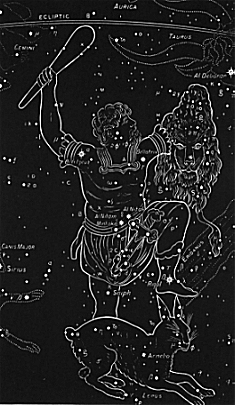 With the above as a foundational understanding, let's move specifically to the meaining behind the constellation of Orion. In "Star Book 3" Chapter I, Bullinger refers to this constellation as the "mighty, triumphant, glorious prince" and does so under the heading of:
With the above as a foundational understanding, let's move specifically to the meaining behind the constellation of Orion. In "Star Book 3" Chapter I, Bullinger refers to this constellation as the "mighty, triumphant, glorious prince" and does so under the heading of:
1. ORION, Light breaking forth in the person of the Redeemer.
He is so pictured in the ancient Denderah Zodiac, where we see a man coming forth pointing to the three bright stars (Rigel, Bellatrix, and Betelguez) as his. His name is given as Ha-ga-t, which means, this is he who triumphs. The heiroglyphic characters below read Oar. Orion was anciently spelt Oarion, from the Hebrew root, which means light. So that Orion means coming forth as light. The ancient Akkadian was Ur-ana, the light of heaven.
Noting that Orion is the most brilliant of all the constellations, Bullinger goes on to describe it, observing also that it is mentioned by name several times in the Bible. Then, he really gets into an amazing tale:
Thus beautifully is set forth the brilliancy and glory of that Light which shall break forth when the moment comes for it to be said, "Arise, shine, for thy light is come."
The picture presents us with "the Light of the world." His left foot is significantly placed upon the head of the enemy. He is girded with a glorious girdle, studded with three brilliant stars; and upon this girdle is hung a sharp sword. Its handle proves that this mighty Prince is come forth in a new character. He is again proved to be "the Lamb that was slain," for the hilt of this sword is in the form of the head and body of a lamb. In his right hand he lifts on high his mighty club; while in his left he holds forth the token of his victory--the head and skin of the "roaring lion." We ask in wonder, "Who is this?" and the names of the stars give us the answer.
The brightest, a (in the right shoulder), is named Betelgeuz, which means the coming (Mal 3:2) of the branch.
The next, b (in the left foot), is named Rigel, or Rigol, which means the foot that crusheth. The foot is lifted up, and placed immediately over the head of the enemy, as though in the very act of crushing it. Thus, the name of the star bespeaks the act.
The next star, g (in the left shoulder), is called Bellatrix, which means quickly coming, or swiftly destroying.
The name of the fourth star, d (one of the three in the belt), carries us back to the old, old story, that this glorious One was once humbled; that His heel was once bruised. Its name is Al Nitak, the wounded One. * Similarly the star k (in the right leg) is called Saiph, bruised, which is the very word used in Genesis 3:15, thus connecting Orion with the primeval prophecy. Like Ophiuchus, he has one leg bruised; while, with the other, he is crushing the enemy under foot.
* The star z (in the belt) is called Mintaka, dividing, as a sacrifice (Lev 8:2).
This is betokened by other stars named Al Rai, who bruises, who breaks (as in Cepheus); andThabit (Hebrew), treading on.
Other (Arabic) names relate to His Person: Al Giauza, the branch; Al Gebor, the mighty; Al Mirzam, the ruler; Al Nagjed, the prince; Niphla (Chaldee), the mighty; Nux (Hebrew), the strong. Some names relate to His coming, as Betelgeuse and Bellatrix, as above; Heka (Chaldee), coming; and Meissa (Hebrew), coming forth.
Such is the cumulative testimony of Orion's stars, which, day after day, and night after night, show forth this knowledge. That testimony was afterwards written in the Book. The Prince of Glory, who was once wounded for the sins of His redeemed, is about to rise up and shine forth for their deliverance. Their redemption draweth nigh; for--
"The LORD shall go forth as a mighty man,
He shall stir up jealousy like a man of war;
He shall cry, yea, roar;
He shall prevail against His enemies.
I have [He says] long time holden my peace;
I have been still, and refrained myself:
Now will I cry like a travailing woman;
I will destroy and devour at once."
Isaiah 42:13, 14Then it will be said to His people (and the setting of the prophecy in its beautiful introverted structure shows us the beauty and glory of the truth it reveals): *
a: Arise,
b: Shine; for thy light is come,
c: And the glory of the LORD is risen upon thee.
d: For, behold, the darkness shall cover the earth,
d: And gross darkness the people;c: But the LORD shall arise upon thee, and His glory shall be seen upon thee.
b: And the Gentiles shall come to thy light,
a: And kings to the brightness of thy rising. (Isaiah 60:1-3)
* Note that--
In a and a, we have the rising of Israel;
In b and b, the light that is come upon her;
In c and c, the glory of the LORD; and
In d and d, the darkness of the world.This is "the glory of the God" which the heavens constantly declare (Psalm 19:1). They tell of that blessed time when the whole earth shall be filled with His glory (Num 14:21; Isa 11:9); when "the glory of the LORD shall be revealed, and all flesh shall see it together" (Isa 40:5), as all see now the beauty of Orion's glory.
But side by side with the glory which the coming Light of the world shall bring for His people, there is "that wicked," whom the Lord "shall destroy with the brightness of His coming."
- E. W. Bullinger, The Witness of the Stars
, excerpts from the Book 3, Chapter I [emphasis mine]
This brings us to the wicked one, known as the Serpent and/or the Dragon, depicted in Chapter IV in the star-story of heavenly "Book I" as Draco. In the Introduction to his book, Bullinger writes:
Most commentators agree that the constellation of "Draco," or the Dragon (between the Great and Little Bear), is referred to in Job 26:13: "By His Spirit He hath garnished the heavens; His hand hath formed the crooked serpent (RV swift. Marg. fleeing or gliding. See Isaiah 27:1, 43:14)." This word "garnished" is peculiar. The RV puts in the margin, beauty. In Psalm 16:6, it is rendered goodly. "I have a goodly heritage." In Daniel 4:2, it is rendered, "I thought it good to show," referring to "the signs and wonders" with which God had visited Nebuchadnezzar. It appears from this that God "thought it good to show" by these signs written in the heavens the wonders of His purposes and counsels, and it was by His Spirit that He made it known; it was His hand that coiled the crooked serpent among the stars of heaven.
Thus we see that the Scriptures are not silent as to the great antiquity of the signs and constellations.
He continues in the section devoted to Draco:
Each of the three great books concludes with this same foreshowing of Apocalyptic truth. The same great enemy is referred to in all these pictures. He is the Serpent; he is the Dragon; "the great dragon, that old serpent, called the Devil and Satan" (Rev 12:9). The Serpent represents him as theDeceiver; the Dragon, as the Destroyer.
This First Book concludes with the Dragon being cast down from heaven.
The Second Book concludes with Cetus, the Sea Monster, Leviathan, bound.
The Third Book concludes with Hydra, the Old Serpent, destroyed.
Here, at the close of the First Book, we see not merely a dragon, but the Dragon cast down! That is the point of this great star-picture.
No one has ever seen a dragon; but among all nations (especially in China and Japan), and in all ages, we find it described and depicted in legend and in art. Both Old and New Testaments refer to it, and all unite in connecting with it one and the same great enemy of God and man.
It is against him that the God-Man--"the Son of God--goes forth to war." It is for him that the eternal fires are prepared. It is he who shall shortly be cast down from the heavens preparatory to his completed judgment. It is of him we read, "The great dragon was cast out, that old serpent, called the Devil, and Satan, which deceiveth the whole world: he was cast out and his angels with him. And I heard a loud voice saying in heaven, Now is come salvation, and strength, and the kingdom of our God, and the power of His Christ; for the accuser of our brethren is cast down" (Rev 12:9,10).
It is of him that David sings--
"God is my king of old,
Working salvation in the midst of the earth...
Thou brakest the heads of the dragons in the waters.
Thou brakest the heads of leviathan in pieces." Psalm 74:12-14Of him also the Spirit causes Isaiah to say, "In that day, shall this song be sung in the land of Judah";
"In that day the LORD, with his sore, and great, and strong sword,
Shall punish leviathan the piercing (RV, swift) serpent,
Even leviathan that crooked serpent;
And he shall slay the dragon that is in the sea." Isiah 26:1; 27:1This is exactly what is foreshadowed by this constellation of Draco. Its name is from the Greek, and means trodden on, as in the Septuagint of Psalm 91:13--"The dragon shalt thou trample under feet," from the Hebrew Dahrach, to tread.
In the Zodiac of Denderah it is shown as a serpent under the fore-feet of Sagittarius, and is named Her-fent, which means the serpent accursed!
There are 80 stars in the constellation; four of the 2nd magnitude, seven of the 3rd magnitude, ten of the 4th, etc.
The brightest star a (in one of the latter coils), is named Thuban (Heb.), the subtle. Some 4,620 years ago it was the Polar Star. It is manifest, therefore, that the Greeks could not have invented this constellation, as is confessed by all modern astronomers. It is still a very important star in nautical reckonings, guiding the commerce of the seas, and thus "the god of this world" is represented as winding in his contortions round the pole of the world, as if to indicate his subtle influence in all worldly affairs.
The next star, b (in the head), is called by the Hebrew name Rastaban, and means the head of the subtle (serpent). In the Arabic it is still called Al Waid, which means who is to be destroyed.
The next star, g (also in the head), is called Ethanin, i.e., the long serpent, or dragon.
The Hebrew names of other stars are Grumian, the subtle; Giansar, the punished enemy. Other (Arabic) names are Al Dib, the reptile; El Athik, the fraudful; El Asieh, the bowed down.
And thus the combined testimony of every star (without a single exception) of each constellation, and the constellations of each sign, accords with the testimony of the Word of God concerning the coming Seed of the woman, the bruising of His heel, the crushing of the serpent's head, "the sufferings of Christ, and the glory which should follow."
- E. W. Bullinger, The Witness of the Stars
, excerpts from the Book 1, Chapter IV [emphasis mine]
This gives a whole new set of meanings to the "star shafts" in the Great Pyramid, especially if it is the monument of Isaiah 19, which testifies of YHWH! Let's look at the layout again:

From the perspective of the King's Champer, consider what is being seen/said:
12 How art thou fallen from heaven, O Lucifer, son of the morning! how art thou cut down to the ground, which didst weaken the nations!
13 For thou hast said in thine heart, I will ascend into heaven, I will exalt my throne above the stars of God: I will sit also upon the mount of the congregation, in the sides of the north:
14 I will ascend above the heights of the clouds; I will be like the most High.
15 Yet thou shalt be brought down to hell, to the sides of the pit.
- Isaiah 14:12-15 (KJV)
We know that Lucifer desired to occupy the place of YHWH on the "sides of the north." Draco is seen through the King Chamber's "star shaft" from the north face. So also the entrance to the pit is on the north side awaiting Draco to be "brought down" to it! Now consider the fact that there is the Southern Cross, and the constellation of Orion, which if Bullinger is correct, is the Redeemer, also depicted and seen through the "star shaft" of the King's Chamber at the south face of the Great Pyramid.
From the Queen's Chamber, we can see Sirius to the south and Ursa Minor to the north. Do these have prophetic significance too? You bet they do! Bullinger writes of Sirius as...
The coming glorious Prince of Princes (Sirius)
In the Denderah Zodiac he is called Apes, which means the head. He is pictured as a hawk (Naz, caused to come forth, coming swiftly down). The hawk is the natural enemy of the serpent, and there it has on its head a pestle and mortar, indicating the fact that he shall crush the head of the enemy.
In the Persian planisphere it is pictured as a wolf, and is called Zeeb, which in Hebrew has the same meaning. Plutarch translates it Leader. In Arabic it means coming quickly.
Its ancient name and meaning must be obtained from the names of its stars which have come down to us. There are 64 altogether. Two are of the 1st magnitude, two of the 2nd, four of the 3rd, four of the 4th, etc. Of these a (in the head) is the brightest in the whole heavens! It is called Sirius, the Prince as in Isaiah 9:6.
Sirius (our English "Sir" is derived from this word) was, by the ancients, always associated with great heat. And the hottest part of the year we still call "the dog days," though, through the variation as observed in different latitudes, and the precession of the equinoxes, its rising has long ceased to have any relation to those days. Virgil says that Sirius
"With pestilential heat infects the sky."
Homer spoke of it as a star
"Whose burning breath
Taints the red air with fevers, plagues, and death."It is not, however, of its heat that its name speaks, but of the fact that it is the brightest of all the stars, as He of whom it witnesses is the "Prince of princes," "the Prince of the Kings of the earth."
Though this "Dog-Star" came to have an ill-omened association, it was not so in more ancient times. In the ancient Akkadian it is called Kasista, which means the Leader and Prince of the heavenly host. While (as Mr. Robert Brown, Jr, points out) "the Sacred Books of Persia contain many praises for the star Tistrya or Tistar (Sirius), 'the chieftain of the East.'" (Euphratean Stellar Researches)
The next star, b (in the left fore foot), speaks the same truth. It is named Mirzam, and means the prince or ruler. The star d (in the body) is called Wesen, the bright, the shining. The star e (in the right hind leg) is called Adhara, the glorious.
Other stars, not identified, bear their witness to the same fact. Their names are--Aschere (Hebrew),who shall come; Al Shira Al Jemeniya (Arabic), the Prince or chief of the right hand! Seir(Egyptian), the Prince; Abur (Hebrew), the mighty; Al Habor (Arabic), the mighty; Muliphen(Arabic), the leader, the chief.
Here there is no conflicting voice; no discord in the harmonious testimony to Him whose name is called "Wonderful, Counsellor, the Mighty God...the Prince of Peace" (Isa 9:6).
The names of the stars have no meaning whatever as applied to an Egyptian Hawk, or a Greek Dog. But they are full of significance when we apply them to Him of whom Jehovah says:
"Behold, I have given Him for a witness to the people,
A LEADER and commander to the people."
Isaiah 55:4This is "the Prince of princes" (Dan 8:23,25) against whom, "when transgressors are come to the full, a king of fierce countenance...shall stand up," "but he shall be broken without hand," for he shall be destroyed "with the brightness of His coming" (2 Thess 2:8). This is He who shall come forth "King of kings and Lord of Lords" (Rev 19:16).
- E. W. Bullinger, The Witness of the Stars
, excerpts from the Book 3 Chapter II [emphasis mine]
Thus, we as the Bride of the King (making us a Queen), can look out the south "star shaft" to see our soon coming Prince of Peace who is the head of the body, called the Church! Looking out the north "star shaft" the Queen can see Ursa Minor. Bullinger corrects some misconceptions concerning this one and then paints another interesting picture for us:
Here we come to another grievous mistake, or ignorant perversion of primitive truth, as shown in the ancient names of these two constellations.
It is sufficient to point to the fact that no Bear is found in any Chaldean, Egyptian, Pesian, or Indian Zodiacs, and that no bear was ever seen with such a tail! No one who had ever seen a bear would have called attention to a tail, such as no bear ever had, by placing in its very tip the most important, wondrous, and mysterious Polar Star, the central star of the heavens, round which all others revolve. The patriarchal astronomers, we may be sure, committed no such folly as this.
The primitive truth that there were two, or a pair of constellations is preserved; and that of these two, one is larger, and the other smaller. But what were they? We have the clue to the answer in the name of the brightest star of the larger constellation, which is called Dubheh. Now Dubheh means a herd of animals. In Arabic, Dubah means cattle. In Hebrew, Dohver, is a fold; and hence in Chaldee it meant wealth. The Hebrew Dohveh, means rest or security; and certainly there is not much of either to be found or enjoyed with bears! The word occurs in Deuteronomy 33:25 "As thy days so shall thy strength be." The Revised Version gives in the margin, "So shall thy rest orsecurity be." This accords with what we have already seen under CANCER: "Couching down between the sheepfolds, he saw a resting-place that it was good."
Here are the two Sheepfolds, then; the Greater fold, and Lesser; and here is the rest and security which the flocks will find therein.
But in Hebrew there is a word very similar in sound, though not in spelling--dohv, which means a bear! So we find in Arabic dub; Persian, deeb and dob. We can see, therefore, how the Hebrew Dohver, a fold, and Dohv, a bear, were confused; and how the Arabic Dubah, cattle, might easily have been mistaken by the Greeks, and understood as a bear.
The constellation, which we must therefore call THE LESSER SHEEPFOLD, contains 24 stars, viz., one of the 2nd magnitude, two of the 3rd, four of the 4th, etc.
The brightest star, a (at the point of the tail), is the most important in the whole heavens. It is named Al Ruccaba, which means the turned or ridden on, and is today the Polar or central star, which does not revolve in a circle as does every other star, but remains, apparently, fixed in its position. But though the star does not revolve like the others, the central point in the heavens is very slowly but steadily moving. When these constellations were formed the Dragon possessed this important point, and the star a, in Draco, marked this central point. But, by its gradual recession, that point is sufficiently near this star Ruccaba, in the Lesser Sheepfold, for it to be what is called "the Polar Star." But, how could this have been known five or six thousand years ago? How could it have been known when it received its name, which means the turned or ridden on? That it was known is clear: so likewise was it made known in the written Word that the original blessing included not merely the multiplicaiton of the seed of faithful Abraham, but it was then added, "And thy seed shall possess the gate of his enemies" (Gen 22:17).
This star was called by the Greeks the "Cynosure." ARATUS seems to apply this term to the whole of the seven stars of the Lesser Bear. Mr. Robert Brown, Jr., shows that this word once supposed to be Hellenic, is non-Hellenic, and possibly Euphratean in origin, from a word which he transliterates An-nas-sur-ra, and renders it, "as it literally means, high in rising, i.e., in heavenly position." (Euphratean Stellar Researches). Is not this the primitve truth of the Revelation? Will not this Lesser Fold be high, yea, the highest in heavenly position?
The Polar Star has been removed from the Dragon, and is now in the Lesser Fold; and when the Dragon shall be cast down from the heavens, the heavenly seed will be safely folded there. But this is the Lesser Sheepfold. These are they who all through the ages have been "partakers of the heavenly calling," who desired a better country, that is, a heavenly; wherefore God "hath prepared for them a city," the city for which Abraham himself "looked." This was no earthly city, but a city "whose builder and maker is God" (Heb 11:10-16). These have always been a smaller company, a "little flock," but the kingdom shall be theirs, even the kingdom of God, for which they now look and wait. They have not yet "received the promises; but, having seen them afar off" by faith, they "were persuaded of them, and embraced them, and confessed that they were strangers and pilgrims on the earth" (Heb 11:13). Their Messiah has accomplished "the redemption of the purchased possession," and in due time the redeemed will inherit it, "unto the praise of His glory" (Eph 1:13).
The bright star b is named Kochab, which means waiting Him who cometh. Other stars are named Al Pherdadain (Arabic), which means the calves, or the young (as in Deut 22:6), the redeemed assembly. Another, Al Gedi, means the kid. Another is Al Kaid, the assembled; while Arcas, orArctos (from which we derive the term Arctic regions), means, according to one interpreter, a travelling company; or, according to another, the stronghold of the saved.
But there is not only the heavenly seed, which is compared "to the stars of heaven," but there is the seed that is compared to "the sand of the sea"--the larger flock or company, who will enjoy the earthly blessing.
- E. W. Bullinger, The Witness of the Stars
, excerpts from the Book 3 Chapter III [emphasis mine]
How incredible that this is what is also seen from the Queen's chamber! When looking at the above examples I found it interesting that aside from Draco, all the "star shafts" are pointing toward hope, even arranged in the third "Star Book" which apparently has the theme:
The Redeemer
(His Second Coming)
"The glory that should follow"
Is this all just a coincidence? Or are these Biblical meanings - the "witness of the stars" - just some of the many messages hidden in the Great Pyramid for us to carefully consider? I believe Patrick Heron may have missed this understanding when he wrote his book, but (assuming these meanings are true), he knows them better than any of us now - as he has gone on ahead of us to that that Heavenly City, whose builder and maker is God. Oh how we long to see what he sees! In the meantime, we'll just keep exploring the mysteries of the Great Pyramid and the Yahuwah Triangle...
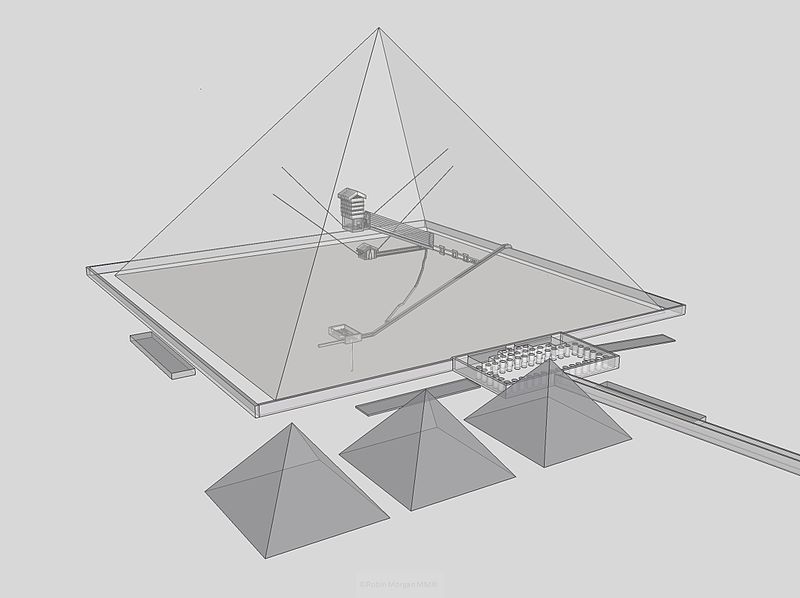
Were you blessed by this information? If so, please consider contributing toward our on-going research efforts. Of course, there is no pressure, but for those so inclined to give, your support is greatly appreciated. We are only able to do this sort of thing for free because of the faithful support of people like you. If you prefer not to donate on-line, please send contributions to: King's Gate Media Please note, we are NOT a 501c3, which means our message is not regulated by the government, |
For more concerning this information, be sure to check out these related products: |
||||||||||
o |
||||||||||
|
||||||||||
If you have enjoyed reading this blog series, be sure to check out these other related products: |
|||||
|
The SUPER Collection |
Mythology and the Coming Great Deception |
The Mount Hermon |
Double Feature! Get both DVDs |
MP3 Files Blog Audio: Includes more than 15 hours of audio! |
MP3 Files Revolutionary Radio: Supernatural Collection Includes more than 15 hours of audio! |
| $50 | $20 | $20 | $35 | $20 | $20 |
The information presented in this blog is part of the e-book series:
|
|||
This e-book series is designed to explore many of the themes, concepts and ideas that will be in our forthcoming sci-fi series SEED. Thus, you might think of it as the non-fiction behind the fiction. To navigate this series, use the slide-out BLOG MENU to the left. Keep in mind that this is a work in progress. As such, each blog (chapter) is subject to change, modification and in some cases a complete re-write as I receive feedback, criticism and new revelation in my research. When I am fairly satisfied with what I have written, I will record myself reading the blog for your benefit. Whenever audio is available, you can listen as you read by clicking on the embedded audio player below each blog's title or by clicking here to bring up the all in one audio player. If I have not recorded a particular blog in audio format, it probably means I am not finished writing and/or editing it. When I feel it is ready, I will record it on my supplemental radio show, The Revolutionary Radio Project on BlogTalkRadio.com.
You can also check out our SEED promotional page to have another resource for posting on Facebook and other social networking sites. Your support is greatly appreciated! A note from the author: This work represents some of my research, thoughts and ideas regarding history and the End Times. Do not take anything I write as the "Gospel Truth." I encourage you to be a “good Berean” and study these things out for yourself to come to your own conclusions. DISCLAIMER: While I do believe that the books contained in The Holy Bible were Divinely inspired and written by men, I do not necessarily hold to the idea that only the 66 books we now have in our (Protestant) Bibles are the sole Divinely inspired books of antiquity. For instance, the King James Version (on which I was raised) used to have 80 books in it. Today, we only have 66. Many editions of the Bible throughout the centuries contained or left out different books. God will not contradict Himself. Therefore, the fact that there have been so many different "canons" of Scripture over the centuries proves to me that the acquisition and accumulation of Scripture has not always been Divinely inspired. I also do not believe that any one version of our English Bible is 100% correct and accurate in its TRANSLATION. Granted, some are better than others. But Hebrew, Greek and Aramaic are all very complex languages and it is often hard for English as a language to do the text justice. Thus, I find that comparing different English translations can help show us a variety of ways of looking at what was originally written. I am mentioning this because throughout this series of blogs I will be referencing different versions of English Bibles as well as taking a look at some of the books not currently considered "canon" in our (Protestant) Bibles. Having grown up in a "KJV only" environment, I felt the need to say this up front. I pray that does not hinder you in any way and that this series of blogs is interesting, enlightening and encouraging to you. |
Were you blessed by this information? |









